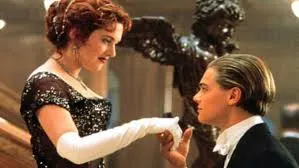As a pioneer in the entertainment industry, I’ve had the privilege of working with some of the world’s most iconic brands, creating immersive exhibitions that transport audiences to new and exciting worlds. At the heart of every successful exhibition is a compelling story, one that resonates with visitors and leaves a lasting impression. In this article, I’ll explore the importance of storytelling in exhibitions and how SEE Global Entertainment, under my leadership, has mastered the art of bringing iconic brands to life through storytelling.
The Power of Storytelling
Storytelling is an ancient art form that has captivated audiences for centuries. It’s a powerful tool that can evoke emotions, spark imagination, and create lasting connections. In the context of exhibitions, storytelling is crucial in creating an immersive experience that engages visitors and makes the brand memorable. By weaving a narrative around an iconic brand, we can create an emotional connection with the audience, making the experience more relatable and impactful.
Bringing Iconic Brands to Life
At SEE Global Entertainment, we’ve had the privilege of working with some of the most iconic brands in the world, including Star Trek, King Tut, and Smurfs. Each brand has its unique story, characters, and universe, and it’s our job to bring these elements to life in a way that’s both authentic and engaging. Through a combination of interactive exhibits, immersive environments, and cutting-edge technology, we create experiences that transport visitors into the world of the brand.
The Art of Storytelling in Exhibitions
So, what makes a successful storytelling exhibition? Here are a few key elements that we’ve found to be essential:
- Immersive environments: Create an immersive environment that transports visitors into the world of the brand. This can be achieved through a combination of set design, lighting, and sound.
- Interactive exhibits: Interactive exhibits allow visitors to engage with the brand in a hands-on way, creating a more memorable experience.
- Authenticity: Ensure that the exhibition is authentic and true to the brand’s DNA. This requires a deep understanding of the brand’s history, characters, and universe.
- Emotional connection: Create an emotional connection with the audience by tapping into their interests and passions.
Case Study: Titanic: Exploring New Worlds
One of our most successful exhibitions was the Titanic Official Movie Tour, which debuted in London in 1999 at the world-renowned Wembley Arena. This 30,000+ square-foot tour exhibit captured the spirit of director James Cameron’s Academy Award-winning film, enabling fans to immerse themselves in the story of Titanic like never before. To bring this iconic story to life, we wove a narrative that transported visitors into the world of the Titanic, recreating the entire iconic Grand Staircase, a masterpiece of Edwardian elegance. One of the most striking features of the exhibit was the cherub lamp that adorned the staircase, which was actually the very same one used in the film. Visitors were amazed by the attention to detail and the immersive experience, which included costumes, set recreations, interactive displays, and special effect demonstrations. They could live iconic movie moments for themselves, such as standing on the bow of the ship with arms outstretched and wind in hair. The exhibit’s success was a testament to the power of storytelling in exhibitions, and it was a thrill to see it win the prestigious THEA Award for Outstanding Achievement. The cherub lamp, a true piece of movie history, is currently up for auction at Heritage Auctions, a reminder of the exhibit’s enduring legacy.
Conclusion
Storytelling is an art form that requires creativity, imagination, and a deep understanding of the brand and its audience. At SEE Global Entertainment, we’re passionate about bringing iconic brands to life through immersive exhibitions that tell compelling stories. By incorporating the elements of immersive environments, interactive exhibits, authenticity, and emotional connection, we create experiences that leave a lasting impression on visitors. Whether you’re a brand looking to create an immersive experience or an exhibition designer looking for inspiration, I hope this article has provided valuable insights into the art of storytelling in exhibitions.
About the Author
Martin Biallas is a pioneer in the entertainment industry, with a career spanning over two decades. As the CEO of SEE Global Entertainment, Martin has worked with some of the world’s most iconic brands, creating immersive exhibitions that have captivated audiences around the globe. With a passion for storytelling and a deep understanding of the entertainment industry, Martin is a thought leader in the field of exhibition design and production.
About Heritage Auctions: Heritage Auctions is the largest auction house founded in the United States and the world’s leading expert in entertainment memorabilia. With global offices and a commitment to exceptional service, Heritage delivers record-setting results for collectors, institutions, and consignors across more than 40 categories.
Auction Details
- Heritage Auctions: Entertainment & Music Memorabilia Signature Auction (#7433)
- Full catalog: entertainment.ha.com
- Lot: Titanic (1997) – Iconic Screen-Used Grand Staircase Cherub
- Live auction: December 9 & 10, 2025





